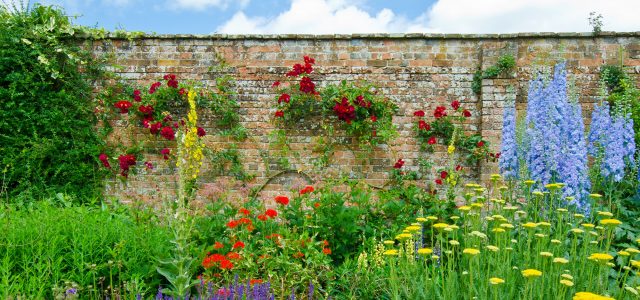
Gardening Trends
Spring is here and most of us are looking forward to the better weather and getting back out in the garden. Claire Foster outlines the trends in garden design and gardening we can expect to see this year
The over-arching trend this year will be the movement towards wildlife-friendly, plant-led gardens that enable everyone to do their bit for the environment. The heightened worry about climate change brings more understanding of the need for biodiversity, so gardens will be fizzing with plant and insect life. People will retune their eye to an aesthetic that is natural and perhaps a little rough around the edges, appreciating the character this brings.
Another reason for surrounding ourselves with plants is for their therapeutic value. The pandemic has made us much more aware of our own mental health and we have learnt first hand how our gardens have helped us through this difficult time. Biophilia – the basic human need to interact with nature – is the word on everyone’s lips, and our gardens can be used to give us the nature-hit we need.
After the stresses and strains of the pandemic, we all need colour in our lives, and planting schemes are moving away from the tasteful pastels and muted colours that have been in vogue for the past decade towards something much bolder. Lustrous, jewel-like colours will be all the rage – but not necessarily in harmonious sweeps or blocks. Planting schemes will be random and natural, like a stylised meadow, designed more for pollinators than human beings.
The uncertainty of climate change and the likelihood of longer periods without rain means that Mediterranean-type planting will become a more popular choice. Drought tolerant flowering plants such as lavender, perovskia and verbena will attract the bees, while shrubs such as Teucrium fruticans, Hebe pinguifolia Sutherlandii and Santolina chamaecy parissus will be planted as alternatives to traditional box and yew.
Try concentrating on implementing eco-friendly practices in your lawn care activities.
For instance, many people have started using natural pesticides and herbicides to avoid pests and insects in their gardens instead of chemicals. You could take a similar approach in 2022. All products used should be non-toxic and safe for humans, pets, and the environment. Similarly, try using recycled water to water your garden.
For most of our lives, we stay indoors. But many of us wish to cherish the beauty of nature. Having a lawn area with beautiful bushes and trees and a cozy central space will be a great place to escape the indoors.
Like many plants in the garden, the grass in your lawn could do with a boost in spring. This involves aerating, scarifying, tidying and fertilising your lawn, helping the grass to regenerate and grow strongly. What’s more, tidying the lawn edges helps to improve the overall appearance of the lawn.
Your first cut of the year should be done with the mower blades set high to help thicken the grass. Afterwards, focus on weeding to reduce competition for nutrients and moisture.

